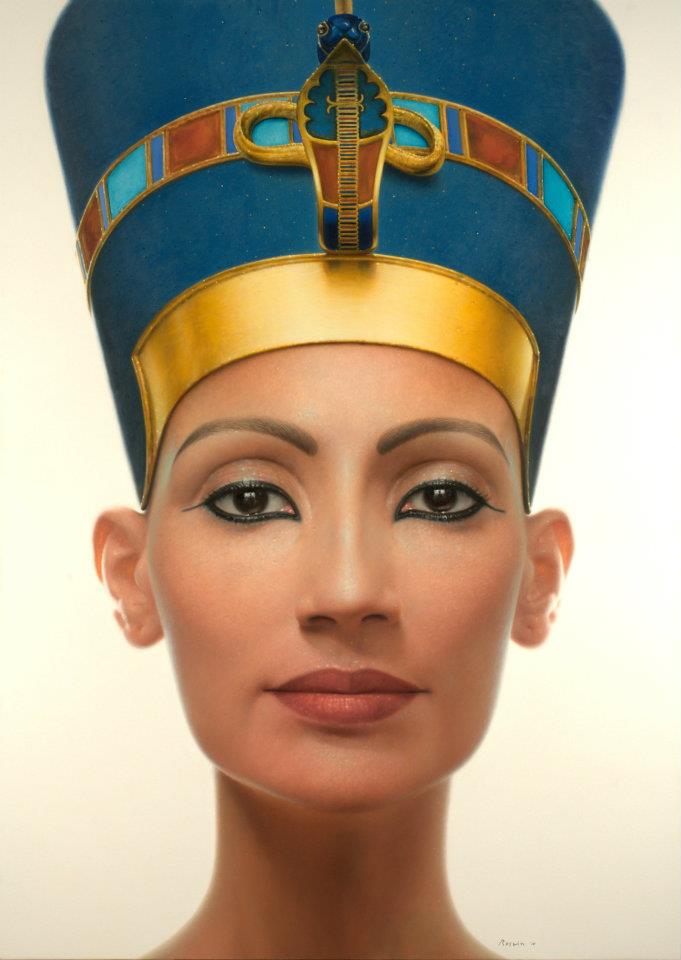Today marks the 103rd anniversary of the discovery of one of the most celebrated portraits in history.
“The epitome of tranquillity and harmony.”
These are the words of Ludwig Borchardt, the German archaeologist who discovered the famous bust of Queen Nefertiti on December 6, 1912.
She was uncovered in the rubble of an artist's studio at Akhetaten, the shiny new city built in the barren desert for the maverick 18th Dynasty pharaoh, Akhenaten.
Akhetaten, (today known as Amarna), was the new capital city founded by Akhenaton around 1343 B.C. to serve as a centre of worship for his revolutionary ‘religion of light’ dedicated to the sun god Aten.
Nefertiti's name means “the beautiful one has come”, and you can see why; even with the distracting damage from 3,200 years under the sands of her husband’s ruined dream city. Normally she is missing her left eye, her ears are damaged and the royal uraeus broken off. But when Nefertiti’s iconic face is made whole and revitalised – wow.
This image was created by Bulgarian-born American artist Ross R. Rossin; famous for his hyper-realistic portraits of modern and historical figures.
Rossin has also taken off a few years. It seems that the original creator of Nefertiti’s bust, the court sculptor Thutmose, was a realist artist himself and modelled Nefertiti as she was, maturing with slight folds under her eyes and slightly sunken cheeks. Rossin however, has presented Nefertiti as she may have appeared in her prime.
Nefertiti's bust is in the Neues Museum in Berlin, where an entire room is set aside for Nefertiti. And deservedly so.
The queen's tomb has never been found, and it may be for good reason. If British Egyptologist, Nicholas Reeves is correct, Tutankhamun's tomb in the Valley of the Kings is keeping a very big secret: the burial of the king who ruled before him, hidden behind the painted walls of Tutankhamun's Burial Chamber. For Reeves, the leading contender for this mysterious predecessor is Nefertiti, who had changed her name to Smenkhkare and ruled as king after the death of her husband (and Tut’s father) Akhenaten, in about 1330 BC.
Radar scans in November revealed the likelihood of a large chamber behind one of the walls. The data is currently being checked before Egypt's Ministry of Antiquities decides what to do next.
